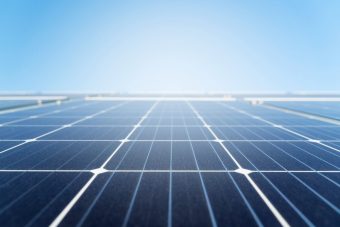
The birds in the trees might already know how important solar energy is, but even if they don’t, from their bird’s-eye view, they surely notice an increasing number of solar panels on the rooftops of buildings, garages, and the ground. As technology evolves, the number of installed solar panels is growing, be it solar trees or solar benches.
The goal of installing solar panels is to enable a more secure energy supply while also reducing the negative impact on the environment. As I mentioned earlier, technological development brings new opportunities every day, and one technological solution has managed to make an already green energy source even greener.
This solution is called solar films, which advantages can be viewed from several perspectives.
Although the agro-solar approach benefits both green energy and agriculture, it remains underutilized. Agricultural and fertile lands are still dominated by large-scale solar power plants where this principle has not been applied. Cities have numerous locations where solar panels could be installed without interfering with other activities. Often when I travel, I wonder why they aren’t installed, for example, along motorway sections that divide traffic into two directions, where there is no shade, and where the space is otherwise unused as no trees or other greenery are planted there. This is just one, perhaps not ideal example as maintaining the panels in that location could be somewhat difficult, but it makes us think about where else we could place solar panels.
Although this may not be the best example, it showcases the advantages brought by solar films. Traditional solar panels can be cumbersome due to their design, thus limiting their wider application. Solar films, on the other hand, are more flexible and adaptable.
Scientists have developed a so-called adhesive film roll, which can stick to various substrates – from glass and concrete to metal. Reportedly, its installation is much simpler and can be completed in just a few hours. Thanks to its adhesive backing, it can be easily secured, and its solar connectors are simply integrated into the solar system. Being very thin and lightweight, they can be installed on roofs with weak structures and on uneven surfaces of various architectural shapes.
Given their flexibility, further development of this technology could lead to more widespread application on cars, fences, windows, and more.
Companies producing solar films are striving to make this product as sustainable as possible. One company highlighted that their films are organic, resulting in an exceptionally low carbon footprint. This includes the entire lifecycle, from raw material sourcing, through production, use, and disposal. For comparison, they provided data showing that this organic technology saves up to one kilogramme of CO2 equivalent per kilowatt-hour of electricity generated compared to fossil fuels like coal. Compared to conventional silicon-based solar modules, these solar films have six times lower carbon footprint.
Additionally, they use two and a half times less material for production than conventional solar modules, and since solar films are classified as solid recovered fuel (SRF), they can be further used after their lifespan ends. To clarify, this fuel is a high-quality substitute for fossil fuels and is mostly produced from commercial waste.
There are many more advantages these companies can boast about, but what is certain is that solar energy is the future and is increasingly pursued for good reason. The continuous efforts to improve this technology will undoubtedly enable even more efficient and sustainable use of both solar films and conventional solar panels.

